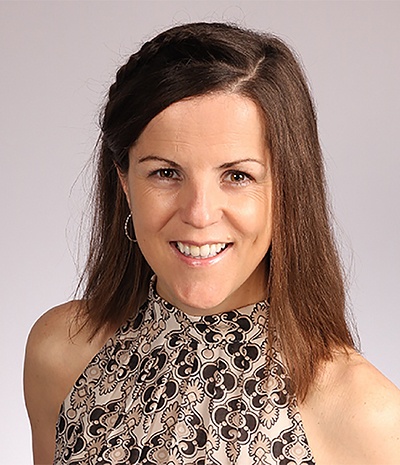
School BUSRide recently spoke with Noelle Ellerson Ng, associate executive director, advocacy and governance, for the School Superintendents Association (AASA). She spoke about the role of lobbyists in Washington, D.C., and the current agenda for the AASA.

How did you become a lobbyist?
My undergraduate degree is in political science, and I was certified in elementary and special education. I am a traditionally certified teacher, I taught high school special ed for just under a year, and I have my master’s degree in public policy and education administration.
I got here by happenstance, quite honestly. While I was an undergrad, I did my semester ‘abroad’ in Washington DC and had accepted an internship with then Senator Clinton’s office.
When I showed up, I completely changed my path and decided to accept another internship as a government relations intern in an international education association. The nonprofit world is where I learned what education policy was, which meant I could do education without having to be in the classroom. By the end of that semester, I knew that I wanted to do education policy and advocacy and that I wanted to be working directly with legislatures.
I then went to graduate school at SUNY Albany, where I did intern shifts at the state legislature for one semester and ended up at the College Board doing state level lobbying. After grad school, I applied to AASA, who I have been with now for 14 years.
I started as a policy analyst and moved up the ranks. I am now the associate executive director for advocacy and governance, meaning I oversee all aspects of federal advocacy for the National School Superintendents Association.
I love what I do. I like the balance that I’m afforded to be an advocate. I like the balance of being in education and doing policy and supporting administrators. I like that I get to have a foot in the policy world, but also the implementation and practical world by directly representing and supporting superintendents.
What is a lobbyist and how does lobbying contribute to legislation?
I’m a not-for-profit education association advocate lobbying at the federal level on education issues. There is a perception of a lot of money in lobbying, and while that may be true in some circles, that is not the case in our work. There’s a difference between lobbying for a not-for-profit membership association and lobbying for the teacher’s union. It’s a different type of engagement with a different aspect of the overall advocacy and government relations relationship.
I can only speak to what I’ve experienced. On behalf of the educators and administrators that I represent, it is being in direct contact with the people who represent on a regular basis to inform the positions they take on key issues and then maintain a regular enough dialogue and relationship with them. When I’m asked a question that isn’t in the legislative agenda, I have enough of a working knowledge to be able to respond accurately on behalf of what their needs are.
The elected member of Congress is a generalist. They are accountable to everyone they represent on every policy issue and vote they make.
All offices have a de-centralized approach. They have staffers for a lot of issues. On the House side, you’ll see a staffer who handles several different policy issues. You might see health, education, labor, and criminal justice all handled by one person. I will meet with the education staffer, but that education staffer is the one who’s taking the day-to-day meeting with all the constituents and involved community members. That staffer is also the one who’s going to the meetings on the Hill with other education staffers and the committees that are considering and marking up bills and voting on them.
In this COVID era, I’m in a lot of coalitions, particularly at the federal level. I have a responsibility to operate my advocacy the same way a school superintendent does. A superintendent works directly, very regularly, with their school board officials, with their business officials, with their teachers and teacher representatives, with their local chamber of commerce, with their parents, with their students, with their principals.
I’m in a coalition for every single issue because I can’t create a policy that would be implemented to a standard of success if I just ran it through from a superintendent’s perspective. We need to make sure that it passes muster with the other stakeholders.
What are some projects that you are currently working on?
The number one thing we’re working on right now is American Rescue Plan implementation. School districts are receiving and in the process of responsibly investing an unprecedented infusion of emergency supplemental funding in response to COVID to help with schools reopening and addressing student learning recovery. After that, we are working on IDEA Full Funding and getting that bill introduced.
The people on my staff are doing some legwork on school nutrition reauthorization, a little bit of work on education technology outside of the American Recipe Plan implementation. Looking at broader connectivity in homes and for students outside of learning hours, where they can get access at home or in the community. We’re always engaged in efforts to defend against privatization. We’re working hard on the infrastructure deal, even though it doesn’t right now look favorable to schools. We’re working on annual appropriation sand then a little bit of Medicaid reimbursement, but the overwhelming proportion of our time, it ties back to ARP implementation.
What are some new and emerging issues coming over the horizon?
American Rescue Plan (ARP) implementation will continue to be relevant and dominant, as their spending decisions will impact districts and students. As I look at what their opening pattern might be or physical distancing or schedule changes, to the extent that a schedule change might result in a transportation route change, that could be relevant. In addition to the K12 dollars, there is also the Emergency Connectivity Fund, which is accessing devices to help students have access outside of school, that’s where our conversation about Wi-Fi on buses comes in.
Outside of ARP, I think IDEA Full Funding is something of interest to NAPT, like in the payment that goes on because there are unique transportation needs associated with some of our medically fragile children or children who have an IEP. The other thing in play here is fully funding IDEA, as that ties into freeing up local dollars for other priorities, which might be related to fleet maintenance, obtaining a fleet, or honoring the contract or making changes for some of our districts to greener transportation. I was glad IDEA funding is there and then annual appropriations for its funding parts. But those would be the things I would put on the radar for your members and the infrastructure package.
Historically, agencies went about their responsibilities consistent with statutory legislation and their mission. Have you noticed a recent tendency of Congress to be more involved in actually directing federal agencies on what they should be doing and how to do it?
If I’ve noticed anything it’s that Congress is more partisan and an uptick in political positioning at the expense of focusing on purity of legislation or purity of representing the constituents they serve. I’m not saying that applies to all members of Congress, but I think the increased partisan nature is more consequential than an interest of Congress to really meddle or direct what an agency does. Federal agencies have two levels of staffing: Political appointees, who serve at the pleasure of the president and set the policy at the agency, and career workers, who should be apolitical and do the work of actually running the program, regardless of whether Congress wants to weigh in with direction.
At the end of the day, Congress has no way to mandate anything without passing a law. If there is a member of Congress who really does want to increase PRESSURE ON an agency, you do that through legislation.
What is your take on agencies that are seemingly disinterested or unresponsive to the industries they regulate or influence?
It’s something I would refer to as either performative or convenient transparency. “Performative transparency” is where they do meetings or round tables and ask questions, and can check a box and say, “yeah, we met with all these stakeholders.” But that doesn’t mean they’re going to take the comments to heart and reflect it in their policy decisions. It’s more like, “ I had the meeting. It doesn’t mean I have to listen to what you do or reflect your feedback in my final product.” It’s performative, to check a box, as opposed to true transparency, which might carry a little bit more weight and “well, last week on an issue where we don’t agree, I just did performative transparency, where I took a meeting with you. But on this issue where we agree, I will reflect on your feedback.” And I think this tendency is definitely a thing with some agencies. Washington, D.C. is always a very busy place with everything seemingly a priority, reflecting the broader complexities of our society. Federal agencies struggle to balance the requirement for public comment with statutory and Congressional deadlines for making things happen, as well as the political priorities of the administration. That’s just the work dynamic.
Do you see any new opportunities or any silver linings for the education professionals based on this COVID experience?
I actually do. Two that I would point to that I talked about regularly; one relates to school nutrition, and another IDEA Full Funding. The second COVID package didn’t include any funding for schools, but it included the critical language that provided the flexibility to allow school districts to continue to feed children while schools were closed. Buses and transportation were a huge part of that in terms of getting meals to neighborhoods. Part of those flexibilities was the ability to feed all kids, regardless of if they needed it or qualified for it. If two years ago we had brought up this concept of universal meals, it would have been a non-starter. But because of how well it worked and how much it demonstrated that people would participate in the program, and we know what participation means for kids being able to better participate in school, there’s now a serious conversation and the push to reauthorize school nutrition where we consider universal meals, or at least having a more expansive or inclusive definition of who can be covered by free and reduced meals. It jump-started a needed conversation that otherwise probably wouldn’t have been possible for 5 to 10 years.
The other one is related to IDEA funding. I co-chair the IDEA Full Funding Coalition and if I sat down in January of 2020 and said, “okay, for next year, we’re going to ask for two and a half billion dollar increase to IDEA,” I would have been laughed at. Or, if someone in my coalition made that recommendation, I would have laughed at them and said, “as a coalition, we can’t call and ask them for two and a half billion dollars– that’s a crazy ask. We will get laughed at and undermine our reputation as the voice on what IDEA funding should be.”
But along comes the American Rescue Plan, which includes a one-time infusion of funding to IDEA at $2.5 billion. And then we follow that with President Biden’s budget proposal, which also includes a significant increase to IDEA. And where are we right now? My coalition is making the case that two and a half billion dollars should be the new funding level. And so those are two examples of things that are possible as the silver lining of COVID that we remain at each day.


